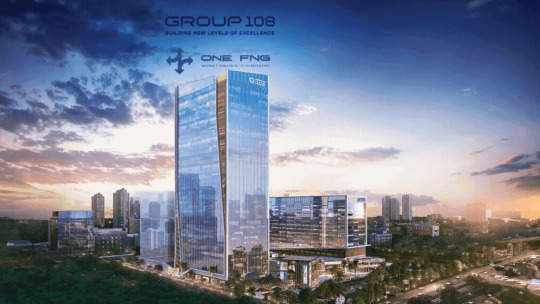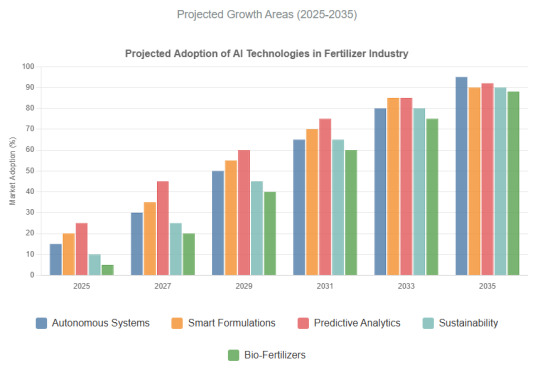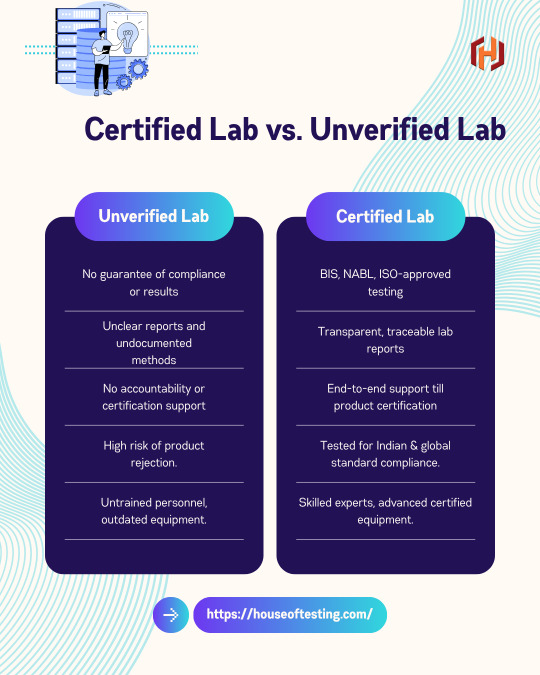#Projects in Sector 78
Explore tagged Tumblr posts
Text
#Grace Resilviaa#Grace Resilviaa Gurgaon#Grace Resilviaa Gurugram#Grace Resilviaa Sector 78#Grace Resilviaa Sector 78 Gurgaon#Grace Resilviaa Sector 78 Gurugram#Grace Resilviaa Project In Gurgaon
0 notes
Text
Ganga Valley Sector 78 Gurugram is a newly launched residential development that offers residential plots with modern facilities & ample living space In Gurgaon.
#Ganga Valley Sector 78#Ganga Valley Sector 78 Gurugram#Ganga Valley Sector 78 Gurgaon#Ganga Valley Sector 78 Plots#Residential Plots In Ganga Valley Sector 78 Gurgaon#Ganga Valley Project In Sector 78 Gurugram
0 notes
Text
#Ganga Sector 78#Ganga Sector 78 Gurugram#Ganga Sector 78 Project In Gurgaon#Ganga Sector 78 Gurgaon#Ganga Sector 78 Apartments
0 notes
Text
Ganga Sector 78 Gurgaon - Luxurious Living Amidst Nature
Ganga Sector 78 Gurgaon is a residential project located in Sector 78, Gurgaon. Offering exquisitely designed 2 & 3 BHK apartments, this residential project redefines opulence and comfort. With its contemporary architecture, spacious rooms, and premium finishes, every detail is thoughtfully crafted to create a haven of tranquility. Conveniently located with easy access to major roads, schools, hospitals, and malls, this project offers a lifestyle of convenience and sophistication.

#Ganga Sector 78#Ganga Sector 78 Gurugram#Ganga Sector 78 Project In Gurgaon#Ganga Sector 78 Gurgaon#Ganga Sector 78 Apartments#Ganga Project in Sector 78#Ganga Project in Sector 78 Gurugram
0 notes
Text
This story originally appeared on Grist and is part of the Climate Desk collaboration.
Seamus Fitzgerald hears a lot of opinions about solar power. As the associate director of real estate at OneEnergy Renewables, a solar energy developer, he approaches farmers and other landowners across the Midwest with proposals to lease their properties for solar projects. Some landowners are excited about being part of the shift to clean energy. Others are hostile to the idea of putting rows of gleaming panels on their land.
Fitzgerald manages to convince many farmers by explaining the simple economics of leasing their land for solar power. “At the end of the day, the financial payments from these types of projects are generally higher than what folks can pull off of their ground through other types of crops,” he said. To sell solar power to people who might have hesitations, he often talks about how the technology was invented in America. “When you install a solar project, you’re collecting an American resource here in America,” Fitzgerald said.
It echoes the way that President Donald Trump talks about energy, though he’s usually heaping praise on American oil and gas, not renewables. Still, the Solar Energy Industries Association, the industry’s primary lobbying group, has found plenty of ways to align its work with the administration’s talking points. Now splayed across its site, next to an image of an American flag hovering over solar panels, is a new slogan: “American Energy DOMINANCE.” Earlier this month, the association participated in a lobbying blitz in Washington, DC, urging lawmakers to keep tax credits for clean energy projects in place.
Solar provided almost 6 percent of total US electricity generation last year, but it’s been growing fast and is expected to supply “almost all growth” in electricity generation this year, according to the pre-Trump Energy Information Administration. Many are hoping that the technology—which is broadly popular among Americans, with 78 percent supporting developing more solar farms—can manage to stay out of Trump’s culture wars over climate change. More so than wind power with its towering turbines, solar energy has an ability to bridge ideological divides, appealing to environmentalists and “don’t-tread-on-me” libertarians alike.
“President Trump has specifically said that he loves solar—and as energy demand soars, we know that solar is the most efficient and affordable way to add a lot of energy to the grid, fast,” said Abigail Ross Hopper, the Solar Energy Industries Association’s president and CEO, in a statement to Grist.
In December her trade group released a policy road map that reflects Trump’s agenda, with priorities such as “eliminate dependence on China” and “cut red tape in the energy sector.” It’s a change from the vision the association laid out in 2020 after the election of former president Joe Biden, when Hopper promised to “meet the moment of the climate era with equity and justice at the forefront.”
The new language reflects a change in the federal government’s priorities, but also a recognition among solar advocates that they don’t need to talk about climate change to advance clean technologies. “Energy independence—I think they should scream that from the rooftops,” Fitzgerald said. “Every single politician in the world, in America, should be saying, ‘We’re trying to make these things here to collect energy here.’”
Last year, solar represented more than 80 percent of new electrical generating capacity added to the US grid. But some predict a slowdown. Solar industry stocks plummeted after Trump’s election in November as investors speculated that Republicans might repeal tax credits for solar in the Inflation Reduction Act, the climate law Biden signed in 2022. In January, a report from the data analytics company Wood Mackenzie projected that solar installations would stagnate in many countries because of “post-election uncertainty, waning incentives, power sector reforms, and a shift towards less ambitious climate agendas.”
“The bottom line is, all that adds up to market uncertainty for one of the fastest growing sectors of our economy, and nothing is more important to businesses and investors than market clarity,” said Bob Keefe, the executive director of E2, a nonpartisan organization promoting policies that are good for the economy and environment. “And right now, what Washington is doing in regard to the future of clean energy in America is about as clear as a snowstorm in DC at midnight.”
Trump has complained about wind power ever since an offshore wind farm threatened the pristine view from his golf course in Scotland soon after he bought it in 2006. On his first day in office this year, he halted new permits for wind projects on federal lands and waters. But his administration’s position on solar is unclear: He has ranted about how solar farms take over deserts while at the same time saying he’s a “big fan” of the technology. “I think they’re more favorable to solar,” Keefe said, “but who knows? And for who knows how long?”
The Trump administration’s assault on the federal bureaucracy has already jeopardized solar projects. The administration has withheld federal grants for climate programs, including Solar for All, a $7 billion program to bring residential solar to low-income neighborhoods, despite court orders to release funding. “We’re seeing real delays in getting that money out the door to the projects that need it,” said Sachu Constantine, executive director of Vote Solar, a nonprofit working to make solar power accessible.
Despite the continued uncertainty, most Solar for All projects “are still attempting to move forward,” said Michelle Roos, executive director of the Environmental Protection Network, a group of alumni from the Environmental Protection Agency.
By some measures, the culture wars are starting to encroach on Americans’ opinions about solar. Republican support for new solar farms slumped from 84 to 64 percent between 2020 and 2024, according to polling last year from the Pew Research Center. Misinformation campaigns have increasingly targeted clean energy, pushing the idea that solar and wind are unreliable—a line taken up by Citizens for Responsible Solar, a group led by a conservative operative who works to stop solar projects on farmland and timberland.
There are some valid reasons why people have hesitations about the technology, according to Dustin Mulvaney, an environmental studies professor at San Jose State University who researches conflicts over solar developments. People might be concerned about projects that take over prime farmland, cut through animal habitat, or affect Indigenous cultural sites. Careful planning can help avoid these conflicts, Mulvaney said. Solar farms can coexist with sheep, for instance. They can be built in a way that leaves space between panels for migrating pronghorn antelope, and in general, avoids prized areas in favor of developing projects on “low-impact sites,” such as degraded lands.
Mulvaney pushes back against the narrative that these concerns are slowing down solar power, arguing that most projects don’t face any resistance at all. Utilities in the US are on track to meet their goals to shift to 100 percent renewable energy by 2060, he pointed out. “To me, the fastest way to get more solar is to require the utilities to buy more of it sooner.”
No matter what Trump does, clean energy advocates are hopeful that solar projects can continue to move forward at the state level. “We feel good about the future for clean energy in our states in the Southeast,” said Mark Fleming, president and CEO of Conservatives for Clean Energy, an organization that works in Virginia, the Carolinas, Georgia, Florida, and Louisiana. “You know, we don’t talk about it in terms of the environment—we talk about it in terms of choice and competition in the market and in terms of good economics, because the price of solar is rapidly declining.” Over the last decade, the cost of installing solar has fallen by nearly 40 percent, according to the Solar Energy Industries Association.
Constantine says that talking about solar’s benefits—whether that’s through creating jobs, reducing blackouts, or pushing electricity prices down—is the key to overcoming hostility. “It is a way to reduce costs, and in this era of rising energy costs and real pinching in people’s pocketbooks, I think that’s a message that resonates,” Constantine said. “When you talk about affordability, resilience, reliability, people get that.”
9 notes
·
View notes
Text
Find The Best Property With CITIBRICKS.IN
Noida, located in Uttar Pradesh, has rapidly developed into a major hub for commercial real estate projects. Several new commercial developments are frequently launched in the area, driven by the region's growing infrastructure, proximity to Delhi, and strong demand for office space, retail outlets, and mixed-use developments.

Here are some of the prominent new commercial projects in Noida as of 2024:
1. The Sky Tower
Location: Sector 62, Noida
Type: Office Spaces
Details: The Sky Tower is one of the latest commercial projects in Noida offering Grade-A office spaces with modern amenities. It's located in a key commercial area, close to Metro connectivity and major roads. The building boasts of sustainable designs, high-speed elevators, ample parking, and a host of retail options on the ground floors.

2. Logix Technova
Location: Sector 127, Noida
Type: IT/ITES Park
Details: Logix Technova is designed to cater to the growing demand for IT and tech-related office spaces. The development features world-class office spaces, green building certifications, and is located within close proximity to key business hubs and transport links.

3. Bhutani Cyberthum
Location: Sector 140A, Noida Expressway
Type: Office Spaces, Retail Shops, F&B Outlets
Details: Bhutani Cyberthum is one of the most talked-about commercial projects in Noida due to its futuristic design and prime location along the Noida Expressway. The development features a mix of office spaces, retail spaces, and an entertainment zone. It has a high-tech building design with energy-efficient features and offers seamless connectivity to Delhi NCR.

4. One Horizon Center
Location: Sector 72, Noida
Type: Office Spaces
Details: One Horizon Center offers state-of-the-art office spaces with high-end amenities. It caters to multinational companies and offers a premium working environment with modern facilities like 24/7 security, automated systems, and wide common areas. The property is well connected to metro stations and expressways.

5. Apex Athena
Location: Sector 62, Noida
Type: Office and Retail Spaces
Details: Apex Athena is a mixed-use commercial development that offers office spaces along with retail outlets. It has an emphasis on design, technology, and comfort. Located in a rapidly developing sector, it promises great connectivity, including easy access to the Noida-Greater Noida Expressway.

6. Sector 135 - Noida
Location: Sector 135, Noida
Type: Office Spaces
Details: Sector 135 in Noida has seen a rise in new office spaces due to its proximity to key IT hubs and major roads. Several new projects are coming up in this sector, targeting tech firms, financial institutions, and corporate offices.

7. Supertech E-Square
Location: Sector 91, Noida
Type: Commercial & Retail
Details: E-Square by Supertech is designed to cater to the growing demand for office spaces and retail outlets. With its strategic location near residential hubs and major transportation links, it offers a great opportunity for businesses looking for a central location in Noida.
8. Express Trade Tower 2
Location: Sector 132, Noida Expressway
Type: Office & Retail Spaces
Details: Express Trade Tower 2 is part of a larger mixed-use commercial development that caters to both retail and office tenants. The development offers ample parking, modern facilities, and is well-connected via the expressway and metro network.
9. The Ozone
Location: Sector 26, Noida
Type: IT and Business Hub
Details: Ozone is a commercial IT park located in Sector 26 of Noida. It offers modern office spaces, a high level of security, energy-efficient designs, and proximity to the metro. This project is tailored to attract IT and tech companies looking for space in Noida.
10. Mahagun Metro Mall
Location: Sector 78, Noida
Type: Retail & Entertainment
Details: This is a large-scale retail and entertainment center with a variety of shops, entertainment zones, and dining options. It's located in a well-connected area and caters to both the local population and visitors from other parts of NCR.
11. ATS Khyber Range
Location: Sector 132, Noida Expressway
Type: Office & Retail Spaces
Details: ATS Khyber Range is a premium commercial development designed for high-end office spaces and retail outlets. The project offers great connectivity, modern amenities, and features large open spaces. It’s being developed with sustainability and future-ready technology in mind.
12. Indospace Logistics Park
Location: Sector 80, Noida
Type: Logistics & Industrial Space
Details: Catering to the logistics and warehousing industry, Indospace Logistics Park is designed to support the rapid growth of e-commerce and supply chain businesses in the region. It offers built-to-suit spaces, modern infrastructure, and direct access to major highways.
#3 bhk flats in noida expressway#2 bhk flats in noida expressway#2 bhk noida expressway#2 bhk yamuna expressway#3 bhk noida expressway#3 bhk yamuna expressway#luxury apartments#2 bhk noida extension#residential apartments in noida#new apartments in noida#2 bhk flats in greater noida
2 notes
·
View notes
Text
Six more provinces are scheduled to be declared landmine free in 2023, including Kampong Speu, Kratie, Kampong Thom, Siem Reap, Mondulkiri, and Ratanakkiri provinces, after 12 provinces were previously declared mine free.
Senior Minister Ly Thuch, First Deputy Chairman of the Mine Authority, said in a press conference on the morning of July 18, that for more than 30 years, Cambodia has been very successful in clearing mines on more than 2,794 square meters with millions of munitions, including more than 1 million anti-personnel bombs (1,177,000), more than 26,000 anti-tank mines, which left more than 60,000 people affected by explosive remnants of war.
More than 4 million explosive remnants have been found by the mine authorities over the past 30 years and have been completely destroyed while 2,794 square kilometers have been handed over to farmers.
Senior Minister said that so far, 12 provinces have been declared mine free, while in 2023, the mine free status will increase to 18 provinces.
Among the provinces announced, some provinces have received the support of the Prime Minister’s project, called “Providing Safe Ground, Creating Smiles” project, up to 3,663 rounds of ammunition were found, including 50 mines and 7,000 unexploded ordnance, and nearly 200,000 people were affected.
The remaining 358 square kilometres of landmines are minefields to be cleared in the upcoming seventh mandate; cluster munitions cover about 700 square kilometres; and explosive remnants of war cover about 500 square kilometres. The mine authority plans to clear 358 square kilometres, which requires $78 million.
The senior minister confirmed that the results of demining from 1992 to June 2023 under the auspices of Australia, Japan, the United States, Britain, Germany, Switzerland, Norway, China, Ireland, New Zealand, the Republic of Korea, Hungary, India, Canada, the United Nations, the EU, Spain, Sweden, Austria, Belgium, France, the Netherlands, Hungary and Denmark, as well as civil society organizations, the private sector and philanthropists. Kampuchea Thmey
26 notes
·
View notes
Text
Chinese projects and investments in Brazil

Chinese companies started 32 previously announced projects in Brazil last year, an increase of 14%, but investments fell 78% to US$1.3bn, the lowest level since 2009.
Most projects, 50%, were in the electric power sector, as information technology accounted for 25%, car manufacturing, infrastructure, agriculture 6% each, and textiles and production of medical devices 3% each, according to the latest study by the China-Brazil business council (CEBC).
Regarding investments, 45% went to the electric power sector, 28% to car manufacturing, 11% textiles, 8% agriculture, 4% information technology and 3% infrastructure.
Brazil was ninth place for Chinese investments and Argentina eighth, with US$1.34bn.
Continue reading.
#brazil#politics#brazilian politics#china#chinese politics#economy#international politics#mod nise da silveira#image description in alt
7 notes
·
View notes
Text
Astor Wealth Group’s $78 Million Dollar Rattle of the Dice in UAE

Astor Wealth Group, an asset management firm specializing in advisory and financing services for Asian and Middle Eastern corporations and institutional clients, is reportedly in significant high-level discussions with not one, but two of China's industry frontrunners in the sustainable energy arena, Xinjiang Goldwind Science and Technology and GCL-Poly Energy Holding Ltd, to forge a groundbreaking joint venture partnership targeting the United Arab Emirates (UAE).
We understand an invigorating $78 Million USD sustainable-energy-based investment will be the nexus of this venturesome partnership. If it indeed materializes, the joint venture will bring to the UAE sustainable energy infrastructure, derived principally from Goldwind's wind turbines and GCL-Poly's polysilicon - an indisputable leap forward for UAE's 2030 vision of sustainable energy and innovation.
Clearly, unifying the transformative potential of wind and solar energy technologies from China's leading brands would offer a clarion call in echoing what Astor epitomizes: Innovation, long-term vision, and sustainable growth.
Xinjiang Goldwind Science and Technology is a reputed powerhouse in wind turbine manufacturing, international engineering, and services in China, stepping the energy landscapes worldwide through comprehensive wind power solutions. Baked by eminent pedigree and performance competence, GCL-Poly Energy Holding Ltd, a leading unified smart and clean energy provider globally, showcases their prowess in solar grade polysilicon manufacturing.
This trilateral sync between Astor, while clearly building bridges between North America, China, and the UAE, offers promise in the high-value and high-tech sector, reinforcing the social and environmental virtue. It aligns coherently with the evolved, sweeping approach bolstering the narrative around environmentally conducive wealth creation and management.
The tentative partnership centers on the profound goal of accomplishing a progressive, sustainable energy project in the United Arab Emirates, a trajectory emblematic of the locoregional commitment to the United Nations Sustainable Development Goals. The UAE’s diversifying energy mix resonates profusely with its inclination to moderate fossil fuel dependency, fostering an innovative and sustainable shift in national infrastructure.
Announcements of such gravitas invoke several pivotal narratives: spreading low-energy cost solutions, enhancing performance viability, collaborative vigor, multi-project alignment, and finally, driving economic diversity and transformation in the macroeconomic ambit. Indeed, the inclination to drive ample economic stimulation while addressing global climate challenges truly reflects a cherished solidarity between Astor, Goldwind, and GCL-Poly.
In marking this partnership's significance, we envisage this venture's local workforce potential, inclusivity, and regional economic circulation simultaneously creating avenues for sustainable resource harvesting, and consequently, community empowerment.
1 note
·
View note
Text
Find the Best Jobs in London - Your 2025 Employment Guide

London's Thriving Job Market - Key Opportunities
London remains the UK's employment powerhouse, currently offering:
320,000+ active vacancies across all sectors
Salaries 25-40% higher than national averages
78% of FTSE 100 companies headquartered in the city
Flexible working options at 68% of employers
Top 5 In-Demand Sectors Hiring Now
IndustryFastest-Growing RolesAvg. Salary RangeTechnologyAI Engineers (£85k), Cybersecurity (£78k)£45k-£120kFinanceFintech Analysts (£62k), Accountants (£55k)£40k-£150k+HealthcareNurses (£38k), Care Workers (£27k)£25k-£80kConstructionProject Managers (£65k), Electricians (£42k)£30k-£95kHospitalityChefs (£33k), Hotel Managers (£48k)£22k-£65k
How to Find Jobs in London - 5 Proven Methods
Specialist Job Portals London Jobs UK features:
18,000+ verified vacancies
Salary comparison tools
One-click applications
Custom job alerts
LinkedIn Strategies
Follow target companies
Connect with 10+ recruiters weekly
Engage with #LondonJobs posts
Recruitment Agencies Top agencies for London roles:
Hays (general)
Robert Walters (finance/tech)
Reed (multi-sector)
Direct Applications 55% of SMEs hire through their websites
Check "Careers" pages weekly
Tailor each application
Networking Events Upcoming London career fairs:
London Career Festival (March)
Tech Jobs Live (Monthly)
NHS Recruitment Days
Application Tips for London Success
✔ London-Optimized CV
Include Tube zones (e.g., "Zone 2-3 accessible")
Highlight relevant city experience
✔ Cover Letter Hack Mention specific London projects/trends
✔ Interview Prep Research:
Company's London presence
Local industry challenges
✔ Salary Negotiation Factor in:
+£4k London weighting average
Transport costs
Emerging London Job Trends
Hybrid Roles (3 days office/2 remote standard)
Green Jobs up 53% (sustainability focus)
Gig Economy growth (35% more freelance platforms)
Start Your London Job Search Today
With new roles added daily, London Jobs UK helps you:
✅ Filter by salary and location ✅ Get instant vacancy alerts ✅ Apply in under 5 minutes ✅ Access exclusive listings
Your ideal London career begins here!
0 notes
Text
Ganga Sector 78 Gurgaon | Residential Floors by Ganga Realty
Ganga Floors Sector 78 is a new residential development by Ganga Realty. It provides 2 BHK & 3 BHK luxury apartments in Gurugram.
#Ganga Sector 78#Ganga Sector 78 Floors#Ganga Floors Sector 78 Gurgaon#Ganga Floors Sector 78 Gurugram#Ganga Project in Sector 78#Ganga Project in Sector 78 Gurugram#Ganga Sector 78 Floors Gurgaon#Ganga Sector 78 Floors Gurugram
0 notes
Text
AI in the Fertilizer Industry: Revolutionizing Agriculture with Smart Technology
Artificial Intelligence (AI) is transforming industries worldwide, and the fertilizer sector is no exception. As global populations grow and arable land becomes scarcer, optimizing fertilizer use has become critical for sustainable agriculture. AI technologies are helping fertilizer companies and farmers make smarter decisions, reduce environmental impact, and increase crop yields.
How AI Benefits the Fertilizer Industry
AI brings numerous advantages to the fertilizer sector:

Key AI Applications Explained:
Precision Formulation: AI algorithms optimize nutrient combinations based on soil data and crop requirements
Smart Manufacturing: Machine learning improves production efficiency and predictive maintenance
Supply Chain Optimization: AI models forecast demand and optimize logistics
Quality Control: Computer vision systems detect product inconsistencies
Field Application: AI-powered equipment enables precision fertilization
Source: Fertilizer Industry AI Adoption Report 2023

Emerging Trends in AI for Fertilizers
The fertilizer industry is witnessing several exciting AI developments:

Key Findings:
Overall AI adoption in fertilizer industry projected to reach 78% by 2030 (up from 32% in 2023)
Precision Formulation will maintain leadership with 85% adoption expected by 2030
Field Application will be the fastest growing segment at 28% CAGR
2026 will be the tipping point with over 50% of fertilizer companies deploying AI solutions
AI-driven yield optimization could increase fertilizer efficiency by 30-40% by 2030
Hyper-localized Recommendations: AI systems combining satellite imagery, soil sensors, and weather data to provide field-specific fertilizer advice
Autonomous Application Systems: Self-driving equipment that applies precisely the right amount of fertilizer at the optimal time
Carbon Footprint Reduction: AI models helping reduce nitrogen losses and greenhouse gas emissions from fertilizer use
Biological Fertilizer Development: Machine learning accelerating the discovery of new microbial-based fertilizers
The Future of AI in Fertilizers
As AI technologies mature, we can expect even more transformative changes:

Data Source: Market Research & Industry Projections (2023) | Visualization: Chart.js
Key Emerging Trends
1. Autonomous Fertilization Systems
AI-powered robotic systems that autonomously monitor fields and apply precise amounts of fertilizer based on real-time plant needs, reducing waste by 30-40%.
2. Dynamic Nutrient Formulations
Machine learning algorithms that create customized fertilizer blends adapting to changing soil conditions and crop growth stages throughout the season.
3. Predictive Nutrient Management
Advanced analytics predicting soil nutrient depletion weeks in advance, enabling proactive fertilization strategies.
4. Emission-Reducing Solutions
AI models that optimize application methods to minimize nitrogen losses and greenhouse gas emissions by 25-35%.
5. Next-Gen Bio-Fertilizers
AI-assisted discovery of novel microbial combinations that enhance nutrient absorption while improving soil health.
Industry experts predict that by 2030, AI could help reduce global fertilizer overuse by 40%, significantly decreasing environmental pollution while maintaining food production levels. The integration of AI with other emerging technologies like blockchain for supply chain transparency and CRISPR for crop optimization will create a new era of precision agriculture.
References:
1. Smith, J. (2023). "AI Applications in Modern Agriculture". Journal of Agricultural Technology.
2. FAO Report (2022). "Digital Transformation in the Fertilizer Sector". United Nations.
3. Market Research Future (2023). "AI in Agriculture Market Forecast 2023-2030".
0 notes
Text
What’s the real difference between a certified testing lab and just a local one?

This project aimed to visually contrast Certified Testing Labs against Unverified ones, assisting manufacturers and startups in grasping the significance of NABL, BIS, and ISO-approved testing services.
Central to this effort is House of Testing, a reliable and NABL-accredited lab, aiding brands in adhering to India's stringent compliance standards.
🎯 Goal Boost brand recognition of the value of certified testing
Inform clients about the hazards associated with unverified labs
Establish House of Testing as the primary BIS/TEC/ISI testing partner
Incorporate SEO keywords into the project's visuals and wording
Visual Approach Two-part layout: Left side = Unverified, Right side = Certified
Red and Green color scheme to represent warnings versus approvals
Simple icons: ❌ versus ✅ for quick visual recognition
Content designed for Instagram, Behance, and LinkedIn
🔑 SEO Keywords: NABL accredited lab
Certified lab versus unverified lab
BIS certified testing
NABL lab near me
ISI mark testing
product testing India
House of Testing
testing for BIS/TEC/ISI certification
📈 Outcomes Enhanced social interaction and content dissemination
Achieved higher rankings for search terms such as “NABL lab near me” and “certified testing labs”
Shared by over 10+ tech manufacturers for their internal onboarding
Reused in carousel posts and certification webinars
📞 About House of Testing House of Testing is a prominent NABL-accredited and BIS-recognized product testing lab located in Noida. We deliver electrical, environmental, and compliance testing services across various sectors, providing accurate reporting, expert support, and complete certification assistance.
Phone: 9899994387 Website: https://www.houseoftesting.com/ Address: B-78, B Block, Sector 5, Noida, Uttar Pradesh 201301 Instagram : https://www.instagram.com/houseoftesting?igsh=ZXoyZzMweXMxOHI3&utm_source=qr facebook : https://www.facebook.com/share/1ajhbTkGp7/?mibextid=wwXIfr
0 notes
Text
Gas Cell Market: Demand for AI Chips in the Semiconductor Sector

MARKET INSIGHTS
The global Gas Cell Market size was valued at US$ 78 million in 2024 and is projected to reach US$ 103 million by 2032, at a CAGR of 4.0% during the forecast period 2025-2032. The U.S. dominates the market with an estimated size of USD 120 million in 2024, while China is expected to grow rapidly to reach USD 95 million by 2032.
Gas cells are specialized optical components filled with precisely controlled gases, primarily used in laser absorption spectroscopy for accurate molecular analysis. These cells enable precise measurement of gas concentrations through characteristic absorption spectra across various applications. The market offers three main product types: open cells for flow-through measurements, sealed cells for stable reference standards, and vapor cells for liquid sample analysis.
Market growth is driven by increasing adoption in environmental monitoring and medical diagnostics, where precision gas detection is critical. The open cell segment currently leads with 45% market share, projected to maintain dominance through 2032. Key players like Guiding Photonics and Aerodyne Research are expanding their portfolios, while recent partnerships in spectroscopy technologies are accelerating innovation in gas cell design and performance.
MARKET DYNAMICS
MARKET DRIVERS
Rising Demand for Environmental Monitoring Solutions Accelerates Gas Cell Adoption
The global emphasis on air quality monitoring and emissions control is driving substantial growth in the gas cell market. Governments worldwide are implementing stricter environmental regulations, with certain regions mandating continuous emissions monitoring systems across industrial facilities. This regulatory push creates sustained demand for gas cells in spectroscopy applications. Recent technological advancements enable detection of pollutants at parts-per-billion levels, making gas cells indispensable for compliance monitoring. The environmental monitoring segment currently accounts for over 35% of total gas cell applications, with double-digit annual growth projected through 2032.
Medical Diagnostic Innovations Fuel Precision Gas Detection Needs
Healthcare applications present a high-growth frontier for gas cell technology. Breath analysis for disease diagnosis has emerged as a non-invasive diagnostic method, with laser-based analyzers requiring specialized gas cells for accurate biomarker detection. The global medical gas analyzer market, valued at approximately $800 million annually, increasingly incorporates gas cell technology for detecting biomarkers like nitric oxide in asthma patients and volatile organic compounds linked to various cancers. Recent clinical studies demonstrate gas cell-based analyzers achieving over 90% accuracy in early-stage disease detection, driving adoption across diagnostic laboratories and point-of-care settings.
Industrial Process Optimization Drives Technical Gas Analysis Demand
Process industries are increasingly adopting real-time gas analysis for quality control and safety monitoring, creating robust demand for precision gas cells. The petrochemical sector alone accounts for nearly 25% of industrial gas cell deployments, utilizing these components in laser absorption spectrometers for process gas monitoring. Advanced manufacturing techniques now enable gas cells to withstand extreme temperatures and corrosive environments, expanding their application scope. Recent technological breakthroughs in miniature gas cells allow integration directly into production line monitoring systems, further accelerating market penetration across heavy industries.
MARKET RESTRAINTS
High Initial Costs and Complex Calibration Challenge Market Penetration
While gas cell technology offers significant analytical advantages, premium pricing structures limit adoption across cost-sensitive market segments. Precision gas cells for spectroscopic applications often carry price tags exceeding $10,000 per unit, placing them beyond reach for many small laboratories and industrial facilities. The requirement for specialized optical alignment and calibration equipment further adds to total ownership costs. In price-sensitive emerging markets, these cost barriers have constrained growth rates to approximately half those observed in developed regions. Additionally, many end-users lack in-house expertise for proper gas cell maintenance, creating ongoing service cost concerns.
Technical Constraints in Harsh Environments Gas cell performance degrades significantly under extreme temperature fluctuations or corrosive gas exposures, requiring expensive specialty coatings and materials. Certain industrial applications report up to 30% shorter operational lifespans for standard gas cell configurations.
Measurement Interference Issues Cross-sensitivity to multiple gas species remains a persistent challenge, particularly in complex gas matrices where spectral overlaps can compromise measurement accuracy and reliability.
MARKET CHALLENGES
Technical Complexity and Skilled Labor Shortage Impede Market Growth
The gas cell market faces significant technical implementation challenges that are slowing adoption rates. Proper integration of gas cells into analytical systems requires specialized optical engineering expertise that is in short supply globally. The photonics industry currently experiences a 20% gap between demand and available skilled technicians, particularly affecting smaller manufacturers. This skills shortage has led to prolonged installation times and suboptimal system performance in certain applications. Furthermore, the lack of standardized interfaces between gas cells and spectrometer systems creates integration hurdles that can delay deployment timelines by several weeks.
Material Science Limitations Current gas cell window materials struggle to maintain optimal optical properties under continuous exposure to certain reactive gases. Performance degradation rates remain unpredictable, complicating maintenance scheduling and lifecycle costing for end-users.
Supply Chain Vulnerabilities Specialty optical components required for high-performance gas cells face periodic shortages, with lead times for certain critical materials extending beyond six months during supply chain disruptions.
MARKET OPPORTUNITIES
Development of Miniaturized Gas Cells Opens New Application Frontiers
Recent advancements in microfabrication techniques are enabling a new generation of compact gas cells suitable for portable and embedded applications. These developments create significant growth opportunities in field-deployable environmental monitoring equipment and medical diagnostic devices. The market for portable gas analyzers incorporating miniaturized gas cells is projected to grow at a CAGR exceeding 15% through 2030. Emerging applications in drone-based atmospheric monitoring and wearable medical sensors present particularly promising avenues for market expansion. Leading manufacturers are investing heavily in MEMS-based gas cell technologies that offer reduced size without compromising analytical performance.
Emerging Economies Present Untapped Growth Potential Rapid industrialization in developing nations creates substantial demand for emission monitoring solutions. Government initiatives aimed at improving air quality standards are driving procurement of advanced gas analysis systems across Asia and Latin America.
Technological Convergence Creates New Possibilities Integration of gas cell technologies with IoT platforms enables real-time distributed monitoring networks for industrial and environmental applications. These smart systems can autonomously adjust measurement parameters based on changing conditions, significantly enhancing operational efficiency.
GAS CELL MARKET TRENDS
Increasing Demand for Laser Spectroscopy Drives Market Expansion
The global Gas Cell market is experiencing significant growth primarily due to the escalating demand for highly accurate laser spectroscopy applications. Gas cells, critical components in absorption spectroscopy systems, are widely utilized for detecting trace gases in environmental monitoring, industrial processes, and medical diagnostics. The precision of tunable diode laser absorption spectroscopy (TDLAS) has made it a preferred method in research and industrial settings, resulting in a compound annual growth rate (CAGR) of approximately 8.7% over the next six years. The adoption of these cells in high-resolution spectroscopy for greenhouse gas analysis has further accelerated market demand, particularly in North America and Europe.
Other Trends
Environmental Monitoring Regulations
Strict environmental monitoring regulations imposed by governments worldwide are pushing industries to adopt advanced gas detection technologies. The increasing focus on reducing carbon footprints and monitoring air quality has fostered innovations in gas cell design, enabling higher sensitivity and durability. Countries such as China and India are investing heavily in air quality monitoring infrastructure, contributing substantially to market expansion. Enhanced regulations on volatile organic compound (VOC) emissions have also prompted industries to integrate gas cells with spectroscopic instruments for compliance monitoring.
Technological Advancements in Healthcare Diagnostics
The medical diagnostics sector is leveraging gas cell technology for non-invasive breath analysis, which aids in detecting diseases such as diabetes and respiratory disorders. The development of portable and miniaturized gas cells has facilitated point-of-care diagnostics, enabling quicker and more accurate disease detection. Breath analyzers equipped with infrared gas cells are gaining traction due to their ability to identify biomarkers like methane and acetone. Research institutions and diagnostic companies are focusing on refining sensitivity thresholds, aiming to achieve detection levels in the parts-per-billion (ppb) range.
Growing Industrial Applications in Process Control
Industrial sectors, including oil & gas and chemical manufacturing, are increasingly relying on gas cells for real-time process monitoring and emission control. Infrared gas cells integrated into spectrometers allow for continuous measurement of hazardous gases, ensuring workplace safety and regulatory compliance. The oil & gas industry alone accounts for nearly 25% of industrial gas cell applications, driven by stringent safety norms and the need for leak detection systems. Emerging economies in Asia-Pacific are witnessing rapid adoption due to expanding industrial activities and heightened safety awareness.
COMPETITIVE LANDSCAPE
Key Industry Players
Innovation and Strategic Partnerships Drive Growth in the Gas Cell Market
The global Gas Cell market exhibits a moderately fragmented competitive landscape, characterized by a mix of specialized innovators and established technology providers. Guiding Photonics and Aerodyne Research currently lead the market, collectively holding a significant revenue share in 2024 due to their patented infrared spectroscopy solutions and strong academic/commercial clientele across North America and Europe.
IRsweep has emerged as a formidable niche player through its quantum cascade laser-based gas cells, particularly in environmental monitoring applications. The Swiss company’s technology enables part-per-billion detection sensitivity—a critical requirement for industrial emission tracking. Meanwhile, PIKE Technologies maintains dominance in the open-path gas cell segment, favored by research institutions for atmospheric studies.
Recent technological advancements have intensified competition. PerkinElmer entered the market through strategic acquisitions, combining its analytical instrumentation expertise with gas cell technology. Similarly, Thorlabs expanded its photonics portfolio by introducing modular gas cells optimized for university labs, addressing the growing demand for customized spectroscopy solutions.
The market also sees active participation from mid-sized innovators like Firebird Optics and Port City Instruments, who differentiate through application-specific designs. Firebird’s miniaturized cells for medical breath analyzers demonstrate how specialized solutions can carve profitable niches against larger competitors.
List of Key Gas Cell Manufacturers Profiled
Guiding Photonics (China)
Aerodyne Research, Inc. (U.S.)
IRsweep (Switzerland)
Firebird Optics (U.K.)
Photonics Technologies (Germany)
Port City Instruments (U.S.)
Buck Scientific (U.S.)
PIKE Technologies (U.S.)
JASCO (Japan)
International Crystal Laboratories (U.S.)
Knight Optical (U.K.)
Guided Wave (U.S.)
Specac (U.K.)
REFLEX Analytical (U.S.)
PerkinElmer, Inc. (U.S.)
Segment Analysis:
By Type
Open Segment Dominates Owing to Widespread Use in Industrial Applications
The market is segmented based on type into:
Open
Sealed
Vapor
By Application
Laser Spectroscopy Segment Leads Due to High Demand for Analytical Instrumentation
The market is segmented based on application into:
Laser Spectroscopy
Environmental Monitoring
Medical Diagnosis
By End User
Industrial Sector Accounts for Maximum Utilization for Process Control Applications
The market is segmented based on end user into:
Industrial
Research Laboratories
Healthcare
Regional Analysis: Gas Cell Market
North America The North American gas cell market is characterized by strong technological advancements and stringent regulatory frameworks, particularly in the U.S. and Canada. The region is a hub for laser spectroscopy and environmental monitoring applications, driven by robust R&D investments in sectors like healthcare and industrial safety. The U.S. government’s allocation of over $50 billion for clean energy initiatives has further spurred demand for advanced gas cell technologies. Key players such as Aerodyne Research and PIKE Technologies dominate the market, focusing on innovation in low-emission and high-precision gas cells. Challenges include high production costs, though increasing adoption in medical diagnostics offsets this limitation.
Europe Europe’s gas cell market thrives under the EU’s Horizon Europe program, which emphasizes sustainable technology development. The region is a leader in medical-grade gas cells, particularly for diagnostic applications, with Germany and France at the forefront. Strict emissions regulations push manufacturers toward eco-friendly designs, such as sealed and vapor gas cells. However, supply chain disruptions and material shortages post-pandemic have slowed production. Collaborations between academic institutions and companies like IRsweep and JASCO are mitigating these issues by localizing component sourcing.
Asia-Pacific Asia-Pacific is the fastest-growing region, fueled by industrialization and government support for environmental monitoring in China and India. China’s 14th Five-Year Plan prioritizes air quality control, creating demand for open-path gas cells in pollution tracking. Japan and South Korea lead in high-precision laser spectroscopy, with companies like Photonics Technologies expanding production capacities. Despite cost-sensitive markets favoring conventional solutions, rising awareness of advanced gas cell benefits is shifting preferences. Infrastructure limitations in Southeast Asia remain a hurdle, though investments in smart cities are gradually addressing this.
South America South America’s gas cell market is nascent but growing, with Brazil and Argentina showing potential in agricultural and industrial monitoring. The lack of localized manufacturing forces reliance on imports, increasing costs. Regulatory frameworks are evolving, with Brazil’s National Environmental Council recently introducing stricter air quality standards. Economic instability, however, restricts large-scale adoption. Niche applications, such as methane detection in mining, offer growth pockets for suppliers like Port City Instruments.
Middle East & Africa The Middle East & Africa market is emerging, driven by oil & gas and healthcare sectors. The UAE and Saudi Arabia invest in infrared-based gas cells for emissions monitoring in refineries. Africa’s adoption is slower due to funding gaps, though South Africa and Egypt show promise in medical diagnostics. Partnerships with global firms, such as Thorlabs, aim to bridge technological gaps. Political instability in some regions poses risks, but long-term opportunities in urban sustainability projects are undeniable.
Report Scope
This market research report provides a comprehensive analysis of the global and regional Gas Cell markets, covering the forecast period 2024–2032. It offers detailed insights into market dynamics, technological advancements, competitive landscape, and key trends shaping the industry.
Key focus areas of the report include:
Market Size & Forecast: Historical data and future projections for revenue, unit shipments, and market value across major regions and segments. The Global Gas Cell market was valued at USD 120 million in 2024 and is projected to reach USD 185 million by 2032, growing at a CAGR of 5.6%.
Segmentation Analysis: Detailed breakdown by product type (Open, Sealed, Vapor), technology, application (Laser Spectroscopy, Environmental Monitoring, Medical Diagnosis), and end-user industry to identify high-growth segments.
Regional Outlook: Insights into market performance across North America (35% market share), Europe (28%), Asia-Pacific (25%), Latin America (7%), and Middle East & Africa (5%), including country-level analysis.
Competitive Landscape: Profiles of 20 leading market participants including Guiding Photonics, Aerodyne Research, and IRsweep, covering their product portfolios, market share (top 5 players hold 42% share), and strategic developments.
Technology Trends & Innovation: Assessment of emerging technologies in gas cell design, integration with spectroscopy systems, and evolving industry standards for precision measurement.
Market Drivers & Restraints: Evaluation of factors driving market growth including increasing environmental monitoring requirements and challenges like high equipment costs.
Stakeholder Analysis: Insights for component suppliers, OEMs, research institutions, and investors regarding the evolving ecosystem and strategic opportunities.
Related Reports:https://semiconductorblogs21.blogspot.com/2025/06/chip-solid-tantalum-capacitor-market.htmlhttps://semiconductorblogs21.blogspot.com/2025/06/global-electrical-resistance-probes.htmlhttps://semiconductorblogs21.blogspot.com/2025/06/high-temperature-tantalum-capacitor.htmlhttps://semiconductorblogs21.blogspot.com/2025/06/global-link-choke-market-innovations.htmlhttps://semiconductorblogs21.blogspot.com/2025/06/multirotor-brushless-motors-market.htmlhttps://semiconductorblogs21.blogspot.com/2025/06/planar-sputtering-target-market.htmlhttps://semiconductorblogs21.blogspot.com/2025/06/ferrite-core-choke-market-opportunities.htmlhttps://semiconductorblogs21.blogspot.com/2025/06/float-zone-silicon-crystal-market.htmlhttps://semiconductorblogs21.blogspot.com/2025/06/carbon-composition-resistors-market.htmlhttps://semiconductorblogs21.blogspot.com/2025/06/resistor-network-array-market-analysis.htmlhttps://semiconductorblogs21.blogspot.com/2025/06/melf-resistors-market-key-drivers-and.htmlhttps://semiconductorblogs21.blogspot.com/2025/06/metal-foil-resistors-market.htmlhttps://semiconductorblogs21.blogspot.com/2025/06/metal-oxidation-resistors-market-size.htmlhttps://semiconductorblogs21.blogspot.com/2025/06/ferrite-toroid-coils-market-growth.htmlhttps://semiconductorblogs21.blogspot.com/2025/06/vacuum-fluorescent-displays-market.html
0 notes
Text
Ganga Sector 78 Gurgaon - 2 & 3 BHK Luxury Apartments
Ganga Sector 78 Gurgaon's exquisite 2 & 3 BHK apartments. Located inside the heart of Gurgaon, these top-rated residences offer a harmonious blend of consolation, style, and convenience. Immerse yourself in a world of current amenities, tasteful interiors, and thoughtful layouts, all crafted to elevate your way of life.

#Ganga Sector 78#Ganga Sector 78 Gurugram#Ganga Sector 78 Project In Gurgaon#Ganga Sector 78 Gurgaon#Ganga Sector 78 Apartments#Ganga Project in Sector 78#Ganga Project in Sector 78 Gurugram
0 notes
Text
Godrej Majesty Noida Extension | Discover Luxurious Living

Godrej Majesty Noida Extension is a residential project that offers an exceptional living experience that caters to the aspirations of modern urban families. Nestled in the center of Noida Extension, this project combines luxury, comfort and a strategic location to offer a great residential retreat for current families. Designed with modern structure, fashionable interiors and green capabilities, this residential development caters to both lifestyle and investment needs.
Excellent Connectivity
Majesty is a prominent Noida Extension, making it simple to reach all of Delhi-NCR's biggest attractions. The Noida-Greater Noida Motorway, NH-24, and future Jewar Airport are nearby. Local metro stations like Sector 76 and Sector 78 help commuters. Its closeness to schools, shops, hospitals and IT clusters will appeal to runners and families. The well-developed social infrastructure surrounding the project ensures that all your desires are within reach.
Elegant Apartments
Modern architecture and luxurious furniture combine in Godrej Majesty Greater Noida residences. The 3 and 4 BHK apartments include luxury fittings, modular kitchens, wide balconies, stylish flooring and large windows for natural light. Every aspect has been carefully crafted for seclusion and comfort in contemporary urban life. Such houses offer sufficient light and smart room use for folks who respect beauty and practicality equally.
Premium Lifestyle
Majesty offers a wide range of lifestyle services to its residents. Indoor and outdoor sports facilities, a swimming pool, a clubhouse, manicured gardens, walking paths and dedicated children's play spaces are all part of the project opportunities. Indulge in some relaxation and rejuvenation in the spa or one of the designated spaces for yoga and meditation. Families may rest well knowing that the project provides 24/7 safety, electrical backup and dedicated parking. People of all ages can benefit from these facilities since they encourage a healthy, active lifestyle.
Eco-Friendly Living Spaces
Sustainability is a strong priority for the Godrej Group and Godrej Majesty is no exception. The project includes rainwater collection, solar power, energy-efficient lighting, and garbage management. The project's lush landscapes and open spaces bring a breath of fresh air to the metropolitan atmosphere. These clever additions reduce environmental impact and promote healthy living.
Future Growth
One of the most rapidly developing residential areas in the National Capital Region is Noida Extension. Property values in the area are skyrocketing due to the high demand for quality residences, the excellent infrastructural development and promising prospects, such as the Noida International Airport. An investment in a Godrej property is an investment in a high-return asset, not merely in a mansion. Project completion, strong resale value and flat capacity are all guaranteed by the trustworthy Godrej Group.
Conclusion
Homeowners seeking convenience, serenity and opulence in one place will find Godrej Majesty Noida Extension to be the ideal area. This residential is sure to become a landmark thanks to its luxury units, amenities, green living capabilities and breathtaking location. This project provides the perfect chance to enjoy a large city life without any worries, whether you are looking for your ideal house or a potential investment.
0 notes